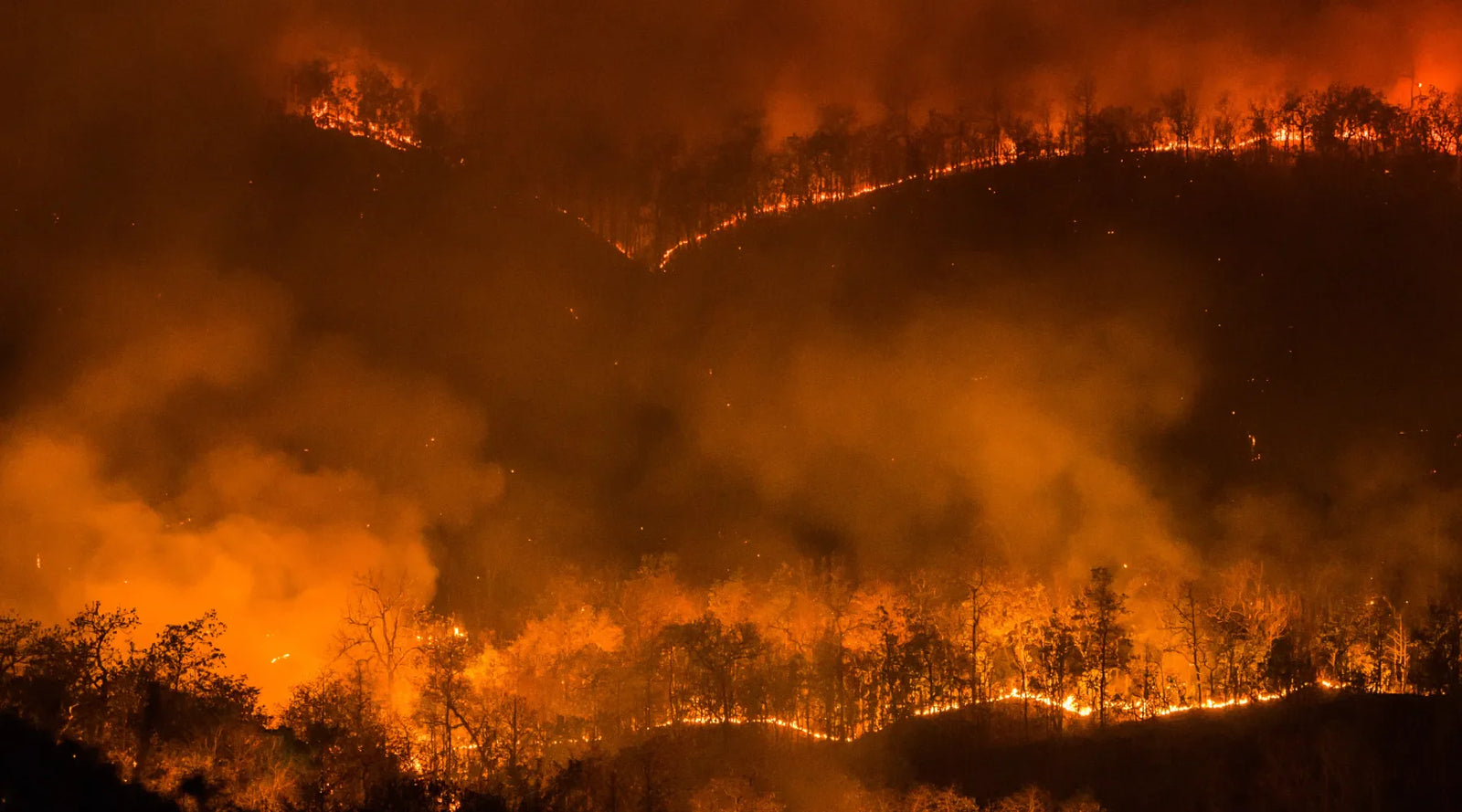Summer is a time for outdoor activities and fun in the sun. But in recent years, it’s also become synonymous with wildfires and allergy symptoms.
Experts agree that climate change is to blame. Drought and rising temperatures have created a fragile environment where wildfires can not only start but spread easily. This shifting ecosystem has also created earlier blooms in the spring, leading to larger pollen loads and longer allergy seasons.
For allergy sufferers and those with conditions like asthma, this makes for a hellish season of sniffling, sneezing, coughing, and respiratory triggers. And it’s not just outdoors—pollen and smoke can sneak their way in through unsealed windows, vents, and small crevices.
So how do you safeguard your home from these airborne irritants? It may not be as difficult as you think.
What are the most common triggers of allergy and asthma?
Everyone’s probably felt like they were allergic to something at some point in time. You can be allergic to everything from grasses to weeds and certainly pollen. More toxic conditions like wildfire smoke affect everyone, regardless of allergies. Wildfires are a combination of everything they’ve burned, from cars to chemicals and all sorts of substances.
Some of the more common allergens are:
- Seasonal Allergies: Pollen from trees, grasses, and weeds are big culprits, especially in spring and fall.
- Year-Round Allergies: Dust mites, pet dander, and mold spores can provoke symptoms throughout the year.
- Non-Allergic Triggers: Besides allergens, these include irritants like wildfire smoke, strong scents from perfume, detergent, and other fragranced products, and cold air, as well as viral infections.

What are some misconceptions about asthma?
Allergies and asthma are way more than just sniffles and wheezes. They are driven by chronic inflammation and impact energy levels, concentration, sleep—every aspect of daily life. One big misconception is that it's 'just a little allergy' or 'mild asthma.' These conditions deserve to be taken seriously and managed proactively.
What role does indoor air quality play?
We spend 90% of our time indoors, so air quality really matters. Even if you're tackling outdoor allergens, your home should be a sanctuary and a place where your body can rest and heal. Dust mites, mold, pet dander, and smoke lingering in the air often trigger an ongoing inflammatory response.
What is the connection to respiratory health?
Imagine your airways are already inflamed due to allergies or asthma. Add pollutants and irritants, and it's like poking the bear. Coughing, wheezing, tightness—these symptoms are all aggravated.
What impact do wildfires have on respiratory conditions?
Sadly, worsening wildfires are a huge factor. Smoke is incredibly irritating to sensitive airways, even in healthy people. For those with allergies and asthma, it can trigger severe flare-ups. Unfortunately, I saw this often last summer with the smoke blowing down from the Canadian fires.

How can air purifiers help with allergies and asthma?
Air purifiers like Molekule are a lifesaver. Unlike traditional filters that just trap particles, Molekule destroys allergens, mold, bacteria, viruses, and VOCs. That's a game-changer to have in your home. They can detect and destroy smoke and pollen particles that find their way into your living spaces. It’s a great way to protect your whole family.
What should I look for in a purifier?
Don't just grab any purifier! Look for:
- PECO technology that destroys pollutants. Most purifiers just “trap” them.
- True HEPA filtration for larger particles.
- Coverage for your space's size.
- Quiet operation, especially for bedrooms.
- Again, Molekule is perfect with its three layers of protection: Carbon that neutralizes pollutants, HEPA that captures large particles, and PECO to destroy them.
How can we prevent allergy and asthma flare-ups?
Be proactive. Minimizing triggers is vital: frequent cleaning, dust mite covers, and keeping pets out of bedrooms (I know, it's hard!). Properly used medications are crucial too—many people underutilize their controller inhalers!
Also, an air purifier isn't a magic bullet, but it's a powerful tool alongside other strategies. Cleaner air leads to less inflammation, less medication needed, and ultimately, a better quality of life.
Any specific advice for those living with allergies and/or asthma?
Besides medication, creating a healthy home is everything! This means reducing allergens where you can, and purifying the air to tackle what you can't fully control. Even just running an air purifier in your bedroom makes a huge difference in sleep quality.
Find a great allergist. They are your secret weapon! Don't try to DIY complex allergies and asthma. Proper diagnosis and personalized treatment plans make all the difference. This is incredibly important with immunotherapy-based treatments, which work to retrain the immune system over time. Traditionally these treatments required injections over many years, but more offices are offering under-the-tongue (sublingual) immunotherapy—which skips the needles—and/or intralymphatic injections, which require only three injections over eight weeks.
Final thoughts?
Don't underestimate allergies or asthma, or how much clean indoor air can help. You deserve to breathe easy and feel your best! These conditions are manageable. Proactive measures, the right medical guidance, and technology like Molekule empower you to control your health, not the other way around.







